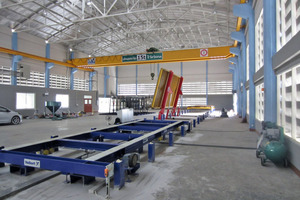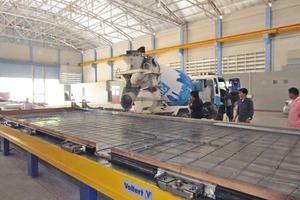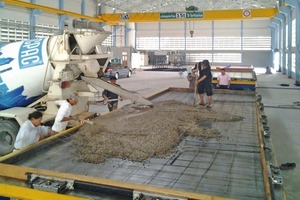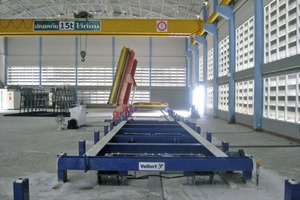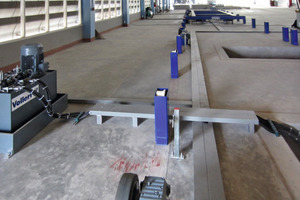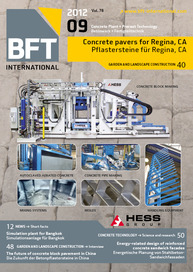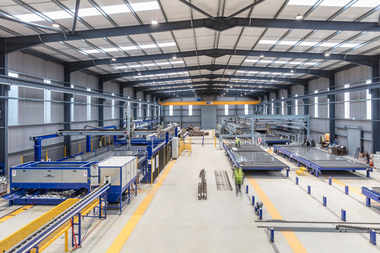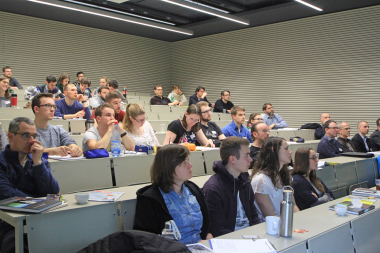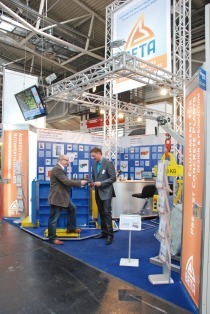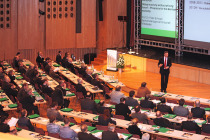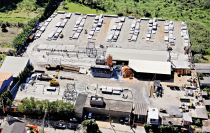Simulation plant for precast production in Bangkok
In a setting very close to reality, students of the renowned ChulalongkornUniversity in Bangkok use a simulation plant to learn more about the production workflows in a state-of-the-art precast facility.
Founded in 1917 by King Vajiravudh, Chulalongkorn University in Bangkok is one of the oldest universities in Thailand. In the future, students at the renowned Faculty of Engineering will have the opportunity of using a new simulation plant to acquire hands-on experience regarding plant and equipment and individual manufacturing steps in state-of-the-art precast production. Equipment manufacturer Vollert Anlagenbau, headquartered in Weinsberg in southern Germany, supplied the production line that enables the manufacture of solid elements and custom precast units.
Simulation close to reality
One of the most important points stressed in the curricula for the almost 30,000 students at Chulalongkorn University in Bangkok is to get as close as possible to real-life conditions. Engineering students will soon be able to study state-of-the-art precast production on a newly installed simulation plant. “We will be using the new production line to teach our students not only the underlying theory but also to convey hands-on knowledge and expertise related to the ever more popular method of precast construction and precast element production. In this endeavor, we rely on the expertise and engineering technology ‘made in Germany’,” explains Dr. Ploonsak, project manager at the Faculty of Engineering.
It was important to clearly demonstrate not only the technology but also the individual manufacturing steps involved in precast production. For this reason, Vollert Anlagenbau, the equipment specialist, made sure to design the production line so as to simulate a state-of-the-art pallet circulation system as close as possible to real-life conditions. The simulation plant is located in a newly constructed factory building extending over an area of 85 by 22 m. The pallets are already fitted with fixed edges; they are transported longitudinally on a roller conveyor between four separately arranged work stations.
All commonly used rein-
forcing techniques
In the first work step, the students put the wooden molds on the prepared pallet surface. The molds are held in place by appropriately arranged magnets. They are fixed by integrated, switchable magnets that provide high holding power. In the next step, the reinforcement is inserted, aiming to familiarize students with all commonly used reinforcing techniques. Then the concrete is poured either from a crane-operated bucket or directly from a truck mixer.
After concrete placement, the pallet is moved to the concrete compaction stage. For this purpose, the pallet is initially lifted from the roller conveyor using a pneumatic system. Vibrational energy is transferred to the pallet by a high-frequency vibration unit composed of twelve synchronous external vibrators. When the concrete mix has been sufficiently compacted, the concrete surface is manually smoothed if required. The precast element is then transported to another work station for curing. A tilt table has been integrated in the production line to lift the demolded solid precast units. This table first raises the pallet by 80° in order to gently lift the element from the pallet using a shop crane. The mold profiles removed in the preceding step are then manually freed of any concrete residues to make them available for the next test runs.
Theory and practice for fu-
ture construction engineers
The process equipment integrated in the production line is controlled from a central operating panel where students are able to monitor the individual components using a visualization shown on a screen.
“The newly installed production line uses state-of-the-art equipment to simulate modern precast element production. This will enable us to teach our students not only the underlying theory but also to provide initial hands-on experience,” says project manager Dr. Ploonsak. Precast production will most probably also become an important sector of the growing construction industry in Thailand in order to meet the increasing demand for residential and industrial buildings in the short term.

